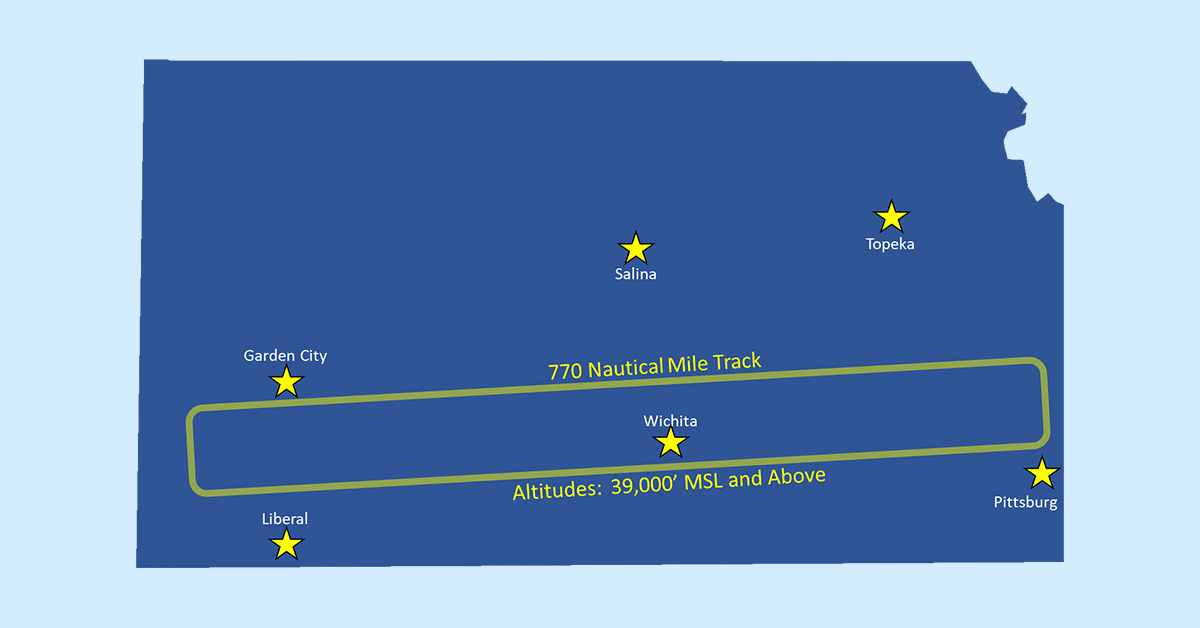
Dec. 17, 2020
NBAA welcomes the official establishment of a new Kansas Supersonic Transportation Corridor (SSTC) for use in testing non-military aircraft that fly faster than the speed of sound, announced Dec. 17 by Gov. Laura Kelly and the state’s Department of Transportation (KDOT) Secretary Julie Lorenz.
“This high-altitude flight corridor gives Kansas a strategic advantage in attracting companies involved in the development of supersonic aircraft, and will play a significant role in our state’s ability to encourage economic development as we recover from the COVID-19 pandemic,” Kelly said in a statement.
The Kansas SSTC is a 770-nautical-mile racetrack-shaped corridor at or above an altitude of 39,000 feet. The FAA’s Kansas City Air Route Traffic Control Center assessed this route to protect the safety and efficiency of the National Airspace System.
This corridor is entirely in federal airspace above Kansas, running the length of the state, just north of the Kansas-Oklahoma border. The route will support sustained flight up to Mach 3 and is within reach of numerous airports equipped to provide fuel, ground and technical support.
To provide safety margins for these operations, the KDOT Division of Aviation, FAA Central Region, Air Route Traffic Control Center and Lemasters Group Consulting wrote new procedures for operators. Aircraft will only enter the SSTC at specific points and will be required to clear flight routes prior to takeoff.
The SSTC is located in generally low-volume airspace, which will minimize any effect on existing flight routes and airports.
Sen. Jerry Moran (R-KS), said industry forecasts show a market for as many as 300 supersonic aircraft over a 10-year period, representing as much as $40 billion in revenue and requiring a “deep bench of skilled manufacturing talent.”
“This year marks 73 years since Chuck Yeager broke the sound barrier, and with this supersonic flight corridor Kansas will have a unique role in the next generation of supersonic transportation,” said Moran.
KDOT has partnered with Wichita State University’s National Institute of Aviation Research to collect noise data and live telemetry from the aircraft that will be used by both the FAA and aircraft manufacturers to evaluate performance.
“Once again, Kansas is providing leadership in the advancement of aviation, through the development of this key asset for testing the viability of modern supersonic flight,” said NBAA President and CEO Ed Bolen. “The development of passenger-carrying supersonic aircraft will play a significant role in the creation of jobs, the development of new technologies and the reimagining of what is possible in powered flight.”


 International Business Aviation Council Ltd.
International Business Aviation Council Ltd.